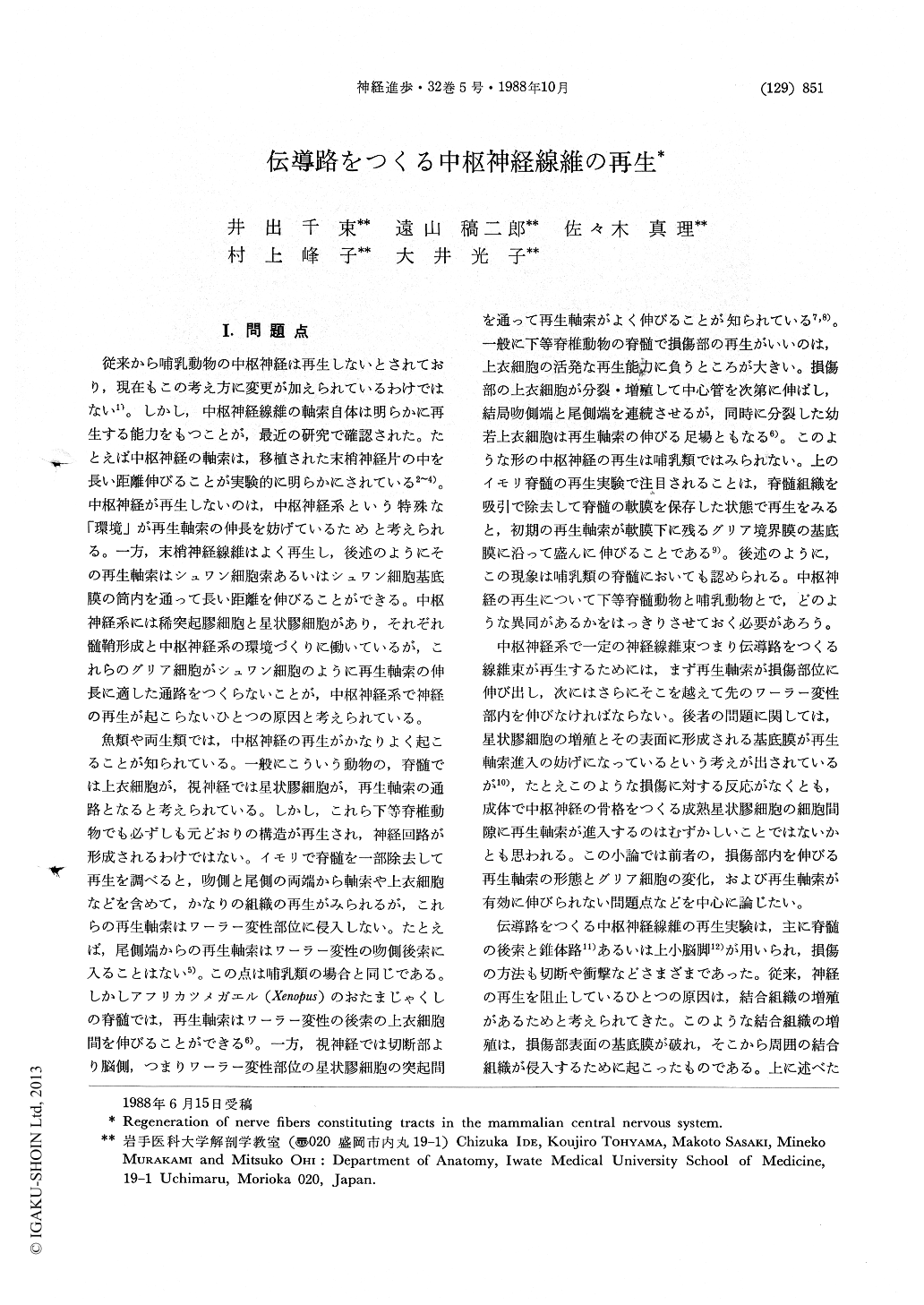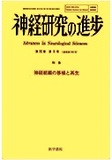Japanese
English
- 有料閲覧
- Abstract 文献概要
- 1ページ目 Look Inside
I.問題点
従来から哺乳動物の中枢神経は再生しないとされており,現在もこの考え方に変更が加えられているわけではない1)。しかし,中枢神経線維の軸索自体は明らかに再生する能力をもつことが,最近の研究で確認された。たとえば中枢神経の軸索は,移植された末梢神経片の中を長い距離伸びることが実験的に明らかにされている2〜4)。中枢神経が再生しないのは,中枢神経系という特殊な「環境」が再生軸索の伸長を妨げているためと考えられる。一方,末梢神経線維はよく再生し,後述のようにその再生軸索はシュワン細胞索あるいはシュワン細胞基底膜の筒内を通って長い距離を伸びることができる。中枢神経系には稀突起膠細胞と星状膠細胞があり,それぞれ髄鞘形成と中枢神経系の環境づくりに働いているが,これらのグリア細胞がシュワン細胞のように再生軸索の伸長に適した通路をつくらないことが,中枢神経系で神経の再生が起こらないひとつの原因と考えられている。
魚類や両生類では,中枢神経の再生がかなりよく起こることが知られている。一般にこういう動物の,脊髄では上衣細胞が,視神経では星状膠細胞が,再生軸索の通路となると考えられている。しかし,これら下等脊椎動物でも必ずしも元どおりの構造が再生され,神経回路が形成されるわけではない。
It is generally considered that nerve fibers con-stituting the tracts in the mammalian CNS cannot regenerate. However, recently the PNS grafting experiments have demonstrated that the CNSfibers themselves have an ability to regenerate through grafted peripheral nerves, indicating that "environment" at the lesion inadequate for the axonal growth may be responsible for the failed regeneration of the CNS fibers. Although extensive studies have been done to analyse the local cellular changes at the lesion influencing against the axonal growth, factors primarily responsible for such abor-tive regeneration have not yet been clarified, leaving the problem of the CNS regeneration unsolved.

Copyright © 1988, Igaku-Shoin Ltd. All rights reserved.


